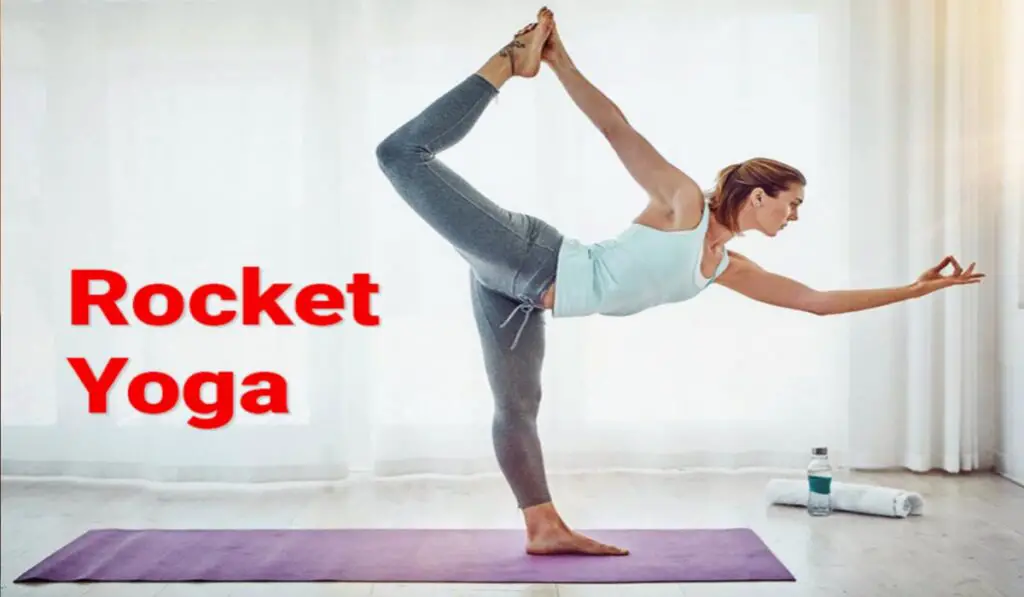What is Rocket Yoga and Origins of Rocket Yoga

Yoga, a practice that originated in ancient India, has evolved over centuries and taken on various forms to meet the needs of different individuals and cultures. Rocket Yoga is one such innovative and dynamic form that has gained popularity in recent years. Developed by Larry Schultz, a former student of Ashtanga Yoga founder Pattabhi Jois, Rocket Yoga is often referred to as “The Rocket” and is renowned for its energizing and transformative effects on both the body and mind.
Origins of Rocket Yoga:
Larry Schultz developed the Rocket Yoga sequence in the 1980s, aiming to make Ashtanga Yoga more accessible and enjoyable for practitioners of all levels. Drawing inspiration from Ashtanga’s primary and intermediate series, Schultz created a more dynamic and fluid sequence that emphasizes flexibility, strength, and balance. The name “Rocket” was given to signify a faster-paced and more efficient practice that propels practitioners toward a heightened sense of well-being.
Key Features of Rocket Yoga:
- Dynamic Sequences:
- The Rocket Yoga sequence is characterized by its dynamic and challenging series of poses. It typically includes a mix of standing, seated, and inverted postures.
- The practice is divided into three main levels: Rocket 1, Rocket 2, and Rocket 3. Each level builds upon the previous one, offering a progressive and evolving experience.
- Breath Awareness:
- Similar to other yoga practices, breath awareness is fundamental in Rocket Yoga. Practitioners are encouraged to synchronize their breath with movement, promoting a focused and meditative state.
- The emphasis on breath helps to create a flow-like quality to the practice, enhancing both physical and mental endurance.
- Inversions and Arm Balances:
- Rocket Yoga places a strong emphasis on inversions and arm balances. Poses like handstands, headstands, and crow pose are integrated into the sequences, promoting strength, balance, and a sense of playfulness.
- Inversions are believed to have numerous health benefits, including improved circulation, increased lymphatic drainage, and enhanced mental clarity.
- Adaptability:
- One of the defining characteristics of Rocket Yoga is its adaptability. The sequences can be modified to suit practitioners of different levels and abilities.
- This adaptability makes Rocket Yoga accessible to a wide range of individuals, from beginners to seasoned yogis.
Benefits of Rocket Yoga:
- Increased Flexibility and Strength:
- The dynamic nature of Rocket Yoga helps improve flexibility by moving through a variety of poses. Additionally, the practice builds strength, especially in the core and upper body.
- Enhanced Focus and Mental Clarity:
- The synchronization of breath and movement in Rocket Yoga enhances concentration and promotes a meditative state. Practitioners often report improved mental clarity and reduced stress.
- Cardiovascular Health:
- The continuous movement in Rocket Yoga elevates the heart rate, contributing to cardiovascular health. The practice serves as both a physical and cardiovascular workout.
- Community and Connection:
- Rocket Yoga is often practiced in a group setting, fostering a sense of community and connection among participants. The supportive environment encourages individuals to challenge themselves and grow in their practice.
Conclusion:
Rocket Yoga stands out as a dynamic and adaptable form of yoga that combines the strength-building aspects of Ashtanga with the fluidity and creativity of Vinyasa. Whether you are a seasoned yogi looking to deepen your practice or a beginner seeking a challenging yet accessible form of yoga, Rocket Yoga offers a transformative journey toward physical and mental well-being. Embrace the power of the Rocket, and soar to new heights of wellness and self-discovery.
